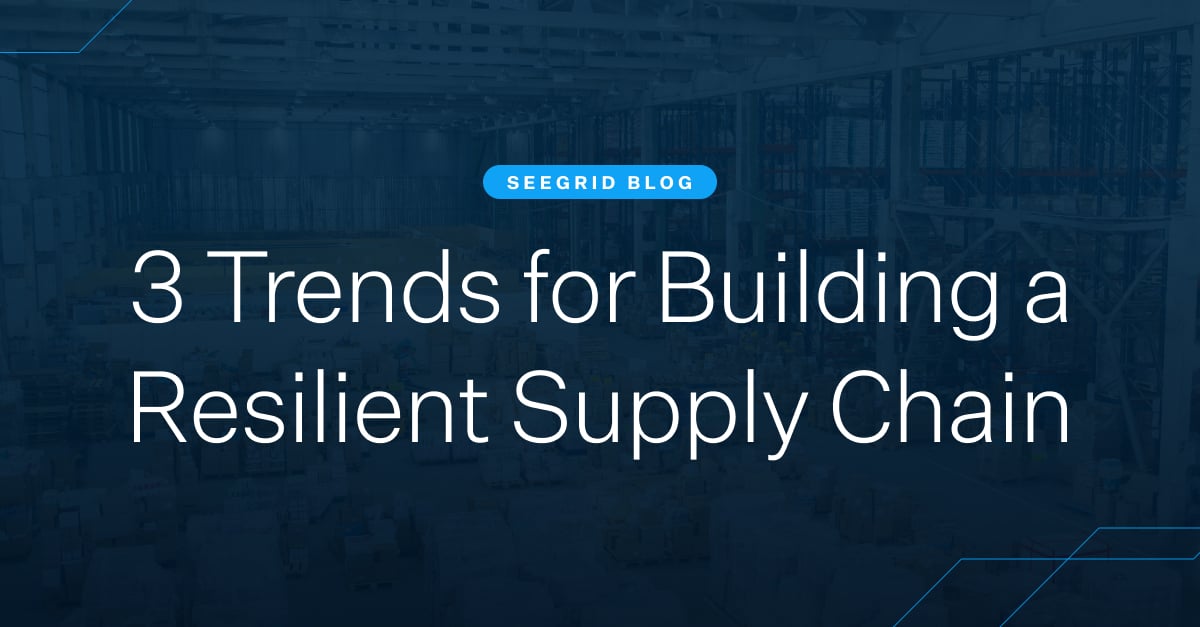The pandemic opened our eyes to how unpredictable the world can be. In an instant, everything was redefined, including daily routines, social interactions, timelines, expectations, consumer behaviors, priorities, and processes altogether. For many supply chain-dependent companies, the pandemic served as a turning point for justifying industrial automation solutions. It became evidently clear that automation is crucial for manufacturing, warehousing, and distribution facilities to remain competitive while facing unpredicted changes.
This level of unpredictability continues to live on beyond the pandemic. For material handling facilities across the supply chain, disruptions and chaos remain. Factors can adjust at any point in time for various reasons. Priorities can change, timelines can shift, new products can be introduced, or supplier issues can occur causing delays in production. Disruptions matter regardless of the size or cause—especially if you are responsible for getting the job done.
Here are three trends to help you future-proof operations to ensure your facility is ready for any challenge and opportunity that comes your way.
Develop an Automation Strategy and Leader
On a daily basis, supply chains are under more pressure than ever. To succeed and gain a competitive advantage, it comes down to how well companies execute while handling uncertainty and change. With heightened consumer expectations for faster deliveries and customized products, shrinking labor pools, and fluctuating order demand, material handling facilities need to put effective strategies into action to ensure they remain resilient in an evolving environment.
Get started by developing a strategic automation plan to achieve day-to-day operational goals that track towards long-term business objectives. First, a facility should take time to understand current processes, problems, and possibilities. This will help you create a starting point as well as measurements of success. By establishing a baseline, you can see where you started, track progress by comparing performance improvements, and identify areas that need to be adjusted to reach your set goals.
Your operational goals should be specific, measurable, and contribute towards achieving overall long-term initiatives. Companies can focus on a variety of topics to improve, including safety initiatives and throughput productivity.
Once you’ve gained an understanding of where you are today and where you want to be in the future, you need to focus on an automation implementation strategy. The successful adoption of new technologies by human workers within a facility is crucial. Companies should appoint an automation champion to ensure that human workers are confident and comfortable as they interact with autonomous mobile robots (AMRs) and automation solutions. As part of this implementation plan, automation champions should empower employees with educational resources and training to understand how to operate the technology. If human employees are utilizing the technology correctly, a facility can achieve goals faster for a maximum return on investment.
With automation playing a major role in an operation’s success, some companies are now creating a new role within their executive leadership teams —the Chief Robotics Officer (CRO)—to strategically plan, implement, and drive adoption of new technologies for continuous improvement with humans and robots working seamlessly together. In an ever-changing environment, it is extremely important to have an automation strategy that enables fast implementation, confident adoption, and continuous improvement.
Digitize with Flexible, Scalable AMR Solutions
Supply chain digitization drives progress and potential. With automation, companies can improve reliability, safety, speed, and cost-efficiency with hands-free processes that can pivot and adjust when the unplannable occurs. However, not all automation solutions are created equal.
More traditional automation solutions, like automated guided vehicles (AGVs), are designed to follow fixed, established paths that are defined by infrastructure within the facility. This can include sensors such as tape, wires, magnets, or reflectors. If changes need to be made within a facility, the built-in infrastructure would need to be reconstructed. This can result in production downtime and additional costs.
A more efficient automation solution is one that provides the flexibility to change over time, like AMRs. Facilities need the ability to quickly adapt to market changes without sacrificing downtime, construction, and added costs. AMRs navigate using on-board technology, without any external maps or landmarks. These robots do not have dependencies on infrastructure compared to traditional infrastructure-based automation solutions. If a change needs to be made, facility workers can quickly train and retrain AMR routes while production is running. Your goals and processes of today will be different from those in the future. For long-term success, an automation solution should allow for retraining and redeployment of AMRs to new tasks, shifts, or new facilities altogether—quickly and easily by facility personnel.
With a flexible automation solution in place, a facility will increase throughput, driving the need to scale for growth across an enterprise. AMRs make it simple to scale your operation. Simply add robots to your fleet; the route and task information can be shared with the new robots to start on their tasks in minutes. Automation flexibility provides the capability to prepare and adapt to unexpected events and opportunities in the future. Build a resilient, next-gen supply chain that can respond and recover quickly to any needs through a flexible automation solution.
Gain Visibility Into Material Flow Through Big Data
The third major trend is focused on big data. Without automation in place, facilities run the risk of falling behind due to a lack of supply chain transparency. In order to identify changes and make informed, objective, and confident decisions about next steps, you need visibility into up-to-the-minute performance and activities across your enterprise.
Create a cognitive supply chain using AMR fleet analytics software. Platforms like Fleet Geek, part of Seegrid’s Fleet Central software suite, allow you to track performance metrics such as the number of deliveries completed over the past hour, day, shift, or week.
With an end-to-end, data-driven view of operations, facilities can easily monitor and analyze metrics to drive action. On-demand insights empower informed decision making to improve facility performance and increase material flow efficiencies.
By keeping tabs on activity, you can boost capacity, optimize fleet performance, and continuously improve by identifying and addressing any issues immediately. Utilize actionable analytics to identify issues, pivot, analyze metrics, and adjust to reach target goals.
Increase visibility into your workflows to confidently optimize for an agile, reliable fleet. Actionable analytics form the foundation for determining where you are today, defining what’s possible for tomorrow, and establishing how you can get there to maintain a competitive advantage.
Preparing for a Resilient Future with Automation
Change is inevitable. Whether it’s a sudden disruption or continued growth, facilities will never escape the element of change—but with change comes opportunity. Supply chains need the flexibility to quickly adapt and shift workflows, processes, and plans to facilitate future growth.
The successful supply chain of the future is one that is resilient with a strategy for achieving goals, flexible automation, and on-demand visibility into AMR fleet performance to identify where improvements can be made. Building a resilient and agile supply chain is critical to a company’s ability to face difficult, unpredicted challenges in the future while achieving daily and long-term goals.
Infographic: Mapping the Route to Automation Success
Download this infographic to learn how you can confidently drive continuous improvement to achieve impactful results with automation.







